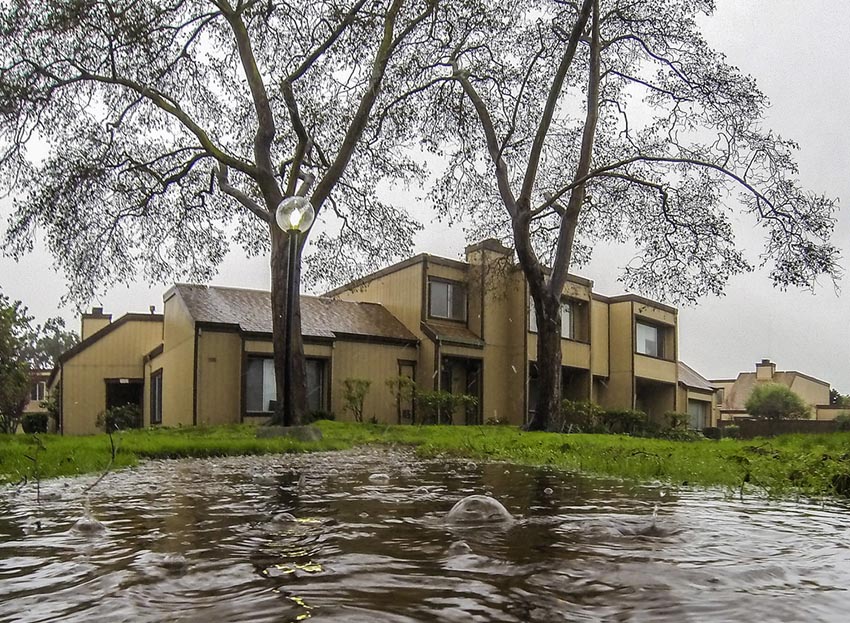 Though winter in the Bay Area is not as extreme as in places like Boston or New York City, there are still a few things homeowners can and should do to make their houses more efficient and ready for the cooler, wetter weather. Check out these tips for winter-proofing your home to prepare for the seasonal storms, which have already started.
Though winter in the Bay Area is not as extreme as in places like Boston or New York City, there are still a few things homeowners can and should do to make their houses more efficient and ready for the cooler, wetter weather. Check out these tips for winter-proofing your home to prepare for the seasonal storms, which have already started.
Exterior
If you live in a pocket of the Bay Area that experiences freezing temperatures, it is advised that you wrap exposed pipes in insulation and winterize any outdoor irrigation systems you may have. Otherwise, in anticipation of stormy (as opposed to freezing) weather, there are several things you can do to prepare the exterior of your home:
- Check the siding and exteriors for loose material
- Clean the gutters
- Clear walkways of any potential hazards
- Trim tree branches near structures or parking areas
See this HouseLogic article for more information about protecting your home from the elements, including a link to what should be in your emergency survival kit in case of a power outage or other emergency.
Interior
When days get shorter and the air cools is the perfect time to prepare your house for the upcoming winter months. Here is a short list of basic indoor winterizing projects to consider:
- Service heating equipment
- Check and clean air ducts — they should be vacuumed every two years to remove hair and debris
- Clean or change furnace filters monthly
- Dial your water heater down to help reduce your heating costs
- Stop door and window drafts with “draft snakes” or rolled towels
- Use a plastic window insulation kit or weather-stripping to winterize drafty windows
- Caulk gaps in siding, windows, and doors
- Make sure your chimney is clear of debris and obstructions
“Simple leaks can sap home energy efficiency by 5 to 30 percent a year, according to the U.S. Department of Energy,” Popular Mechanics says in this 19 Ways to Winterize Your Home article. If you live in a part of the Bay Area that doesn’t typically experience freezing temperatures, wind and the resulting drafts and leaks are often a main concern.
Insulation
There are many types of insulation — batts and blanket being the most popular type. Fiberglass, cotton, and rockwool are three common materials used in batts and blanket-style insulation. Spray foam, structural insulated panels (SIPs), and loose fill are also acceptable options.
Each type of material has its advantages and disadvantages. Energy Vanguard compares batts, blown, and sprayed insulation in terms of advantages for use in the attic. You can read more about insulation types on HouseLogic, including estimated costs per type. The Energy.gov website provides more information and a chart of how much insulation your home will need based on U.S. location. And here is a guide from the DIY Network on how to insulate your attic yourself.
Vacation or Second Home
If you are leaving a home for an extended period of time, there are a few extra tasks to consider, especially if it will be vacant during cold-weather conditions where temperatures may slip below freezing:
- Take in all outdoor furniture
- Close the fireplace damper
- Turn off breakers to cut power
- Drain the water heater, toilets, and pipes
- Put nontoxic antifreeze in toilet bowls
- Run the dishwater dry and put one-third of a gallon of antifreeze in it
This article from HomeAdvisor has more tips on how to winterize a vacant home.
For more information about winterizing a cold-weather home, check out this article at This Old House. And, if on a budget, Vila Media offers this informative article that breaks down winterizing projects by cost, no matter what type of climate you live in.
Storm Damage
If your home is damaged due to a storm or other weather-related cause, your homeowners’ insurance may cover the damage, depending on your policy. Talk to your insurance agent about the type of damage your policy covers. The National Storm Damage Center answers questions about insurance on its website.

